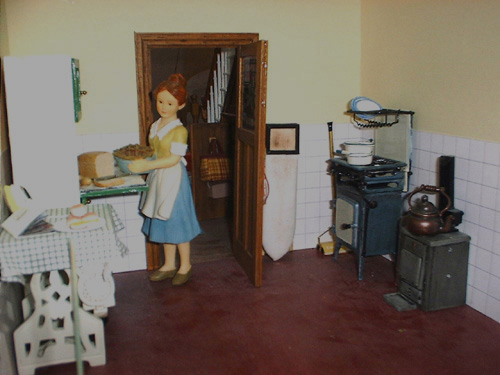

The first thing I made for the kitchen was this cabinet. As I was still very new to woodworking it was quite an adventure, but I was very pleased with the result. All doors and drawers open.
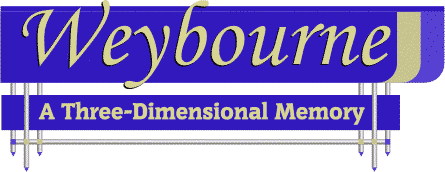
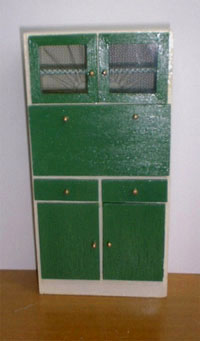
 | ||||||
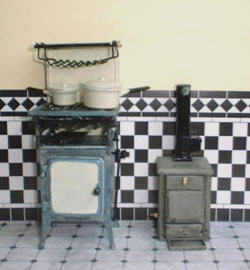
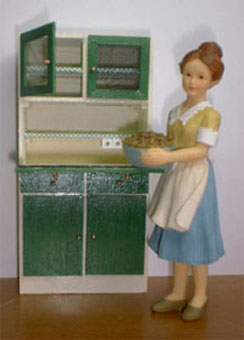
 | ||||||
The gas cooker and Ideal boiler (which provided hot water for the kitchen and bathroom) were made from white metal kits, and painted with Humbrol paints.
 | ||||||
The kitchen
 | ||||||
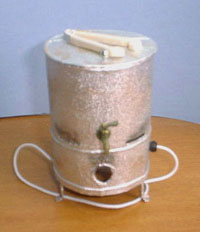
The wash boiler, usually referred to as "the copper", dominated Mondays. I can remember coming home from school for lunch, the house was full of steam, my mother red faced with whispy hair. The copper had to be filled with water from the tap, then the gas underneath was lit with a WHUMPH that used to terrify me. First the whites were boiled, prodded with a long coppler stick which was bleached white and the end quite stringy from being in the hot water for so long. Then the tongs were used to transfer the sheets, soaking wet and steaming hot, to the sink for rinsing. They were then rung out by hand, and finally put through the mangle. My mother must have had the muscles of a navvy.
 | ||||||
The ironing board stands behind the kitchen door, from which hangs an apron.
The floor was red quarry tiles, which my mother polished with Mansion Polish. I covered a piece of grey card with deep red Humbrol paint, drew in the lines between the tiles with a grey pencil, and varnished over it. The walls were half tiled in white, which I made by printing grey lines onto white photographic paper, with cream card above.

 | ||||||
I made the copper by first cutting an oblong of strong card to size, and gluing lengths of thick crochet cotton where I wanted the raised metalwork. This was then covered with thick textured foil (the seal off a tub of St. Ivel Gold).
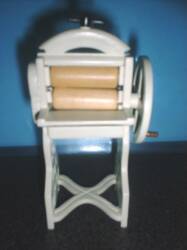
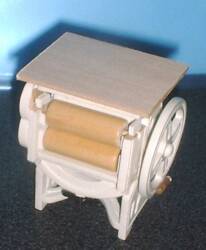
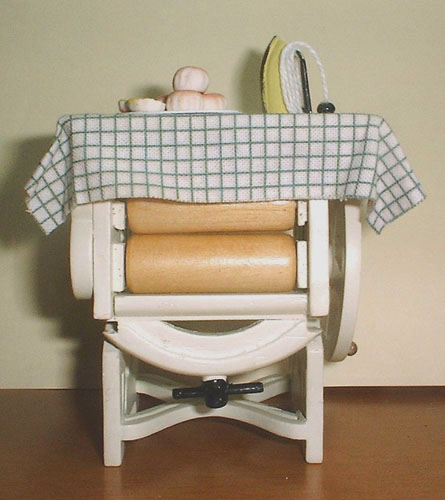
The kitchen table was in fact a fold down mangle, with a tabletop to use when the mangle wasn't needed. I looked everywhere to find a suitable mangle, but the only ones I could find were either made of metal or resin. Then, when I wasn't looking for one, I found a perfect one made of wood. I brought it home, took it to pieces - and then realised that I wanted a "before" photograph, and had to glue it back together again. I then separated the various parts again and glued it back in "folded down position", made a table top, and added a cloth. I hadn't really remembered what my mother's one looked like, but when I see this one it seems right.
 | ||||||
 | ||||||
 | ||||||
The last things I made for the kitchen were the cupboard under the sink, and the larder.
The sink was a deep china one. The draining board was metal, and clipped onto the side of the sink. When not in use it slid into brackets under the main shelf in the larder.
When the draining board was in position, it went right across the back door, so the door couldn't be opened (or closed) until the board was put away again.
The larder was used for storing the copper, various pots and pans, as well as crockery and glassware. I vividly remember the two tier glass cakestand which stood in the centre of the upper shelf. On the floor beside the copper is a Victorian housemaid's box, which I made from a McQueenie kit. On the shelf above it is a beautiful box I was given by Jane Harrop. The lid opens to reveal various tiny brushes (including a bottle brush), and the drawer at the bottom is full of the tiniest clothes pegs imaginable.